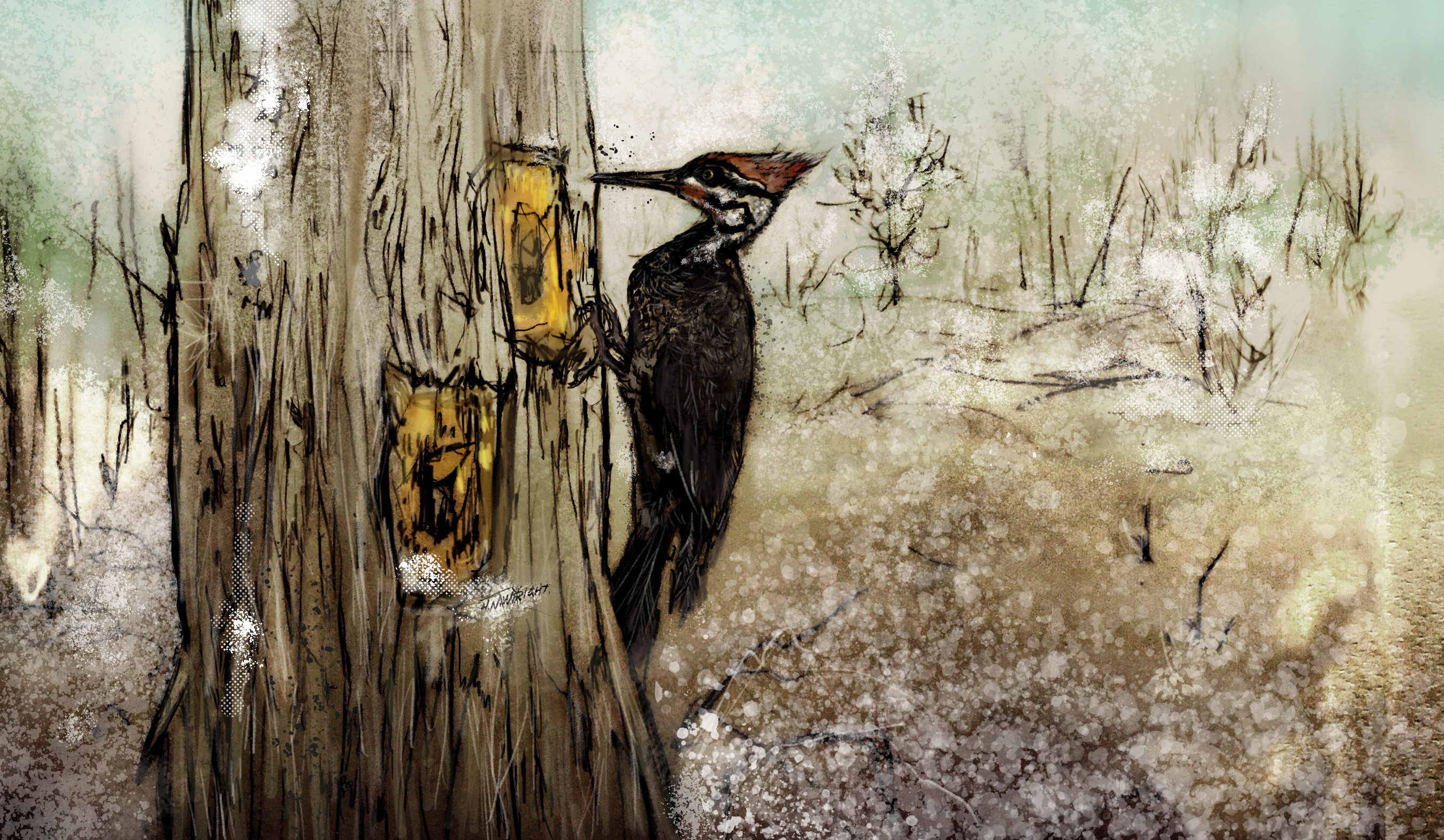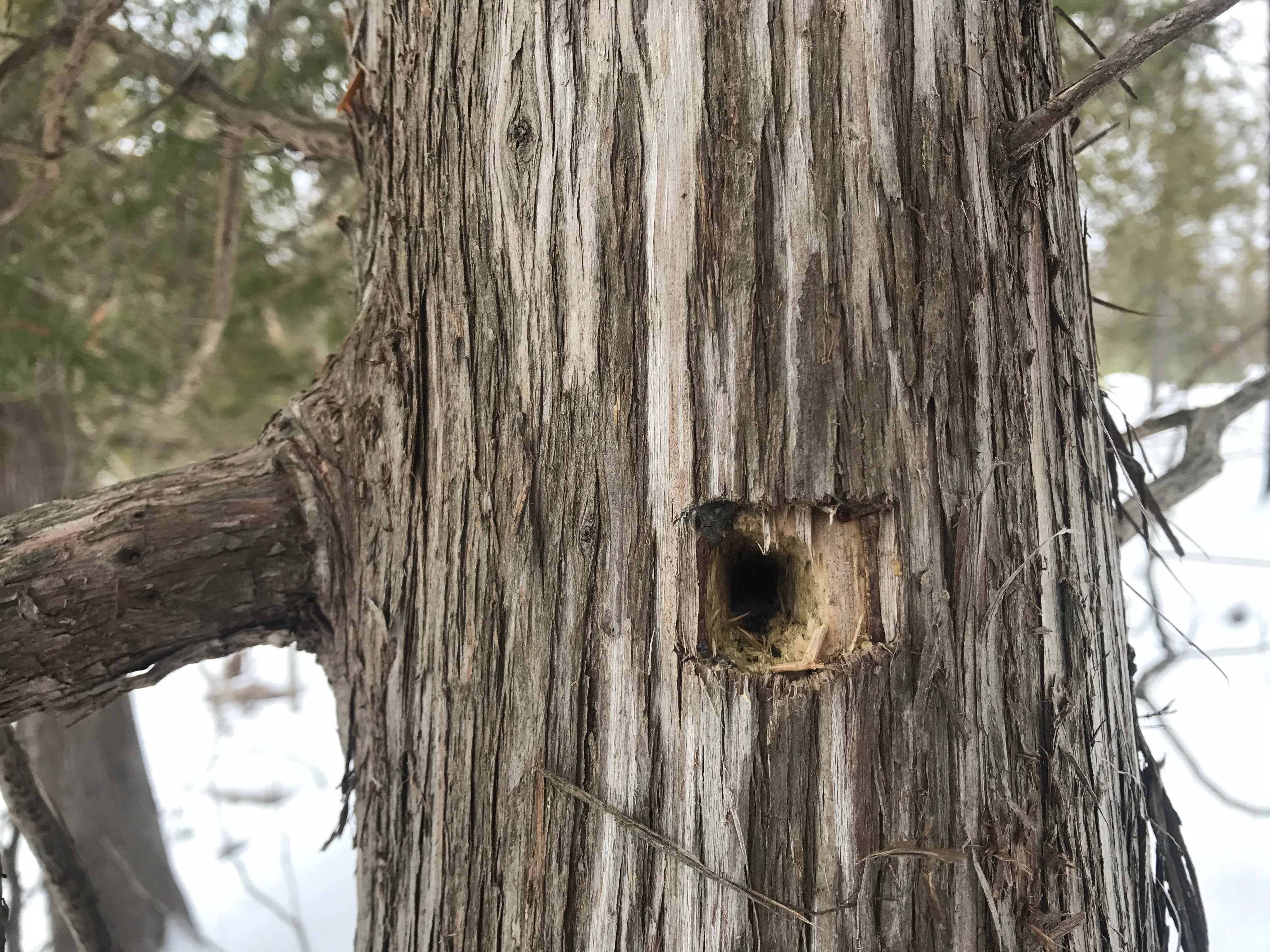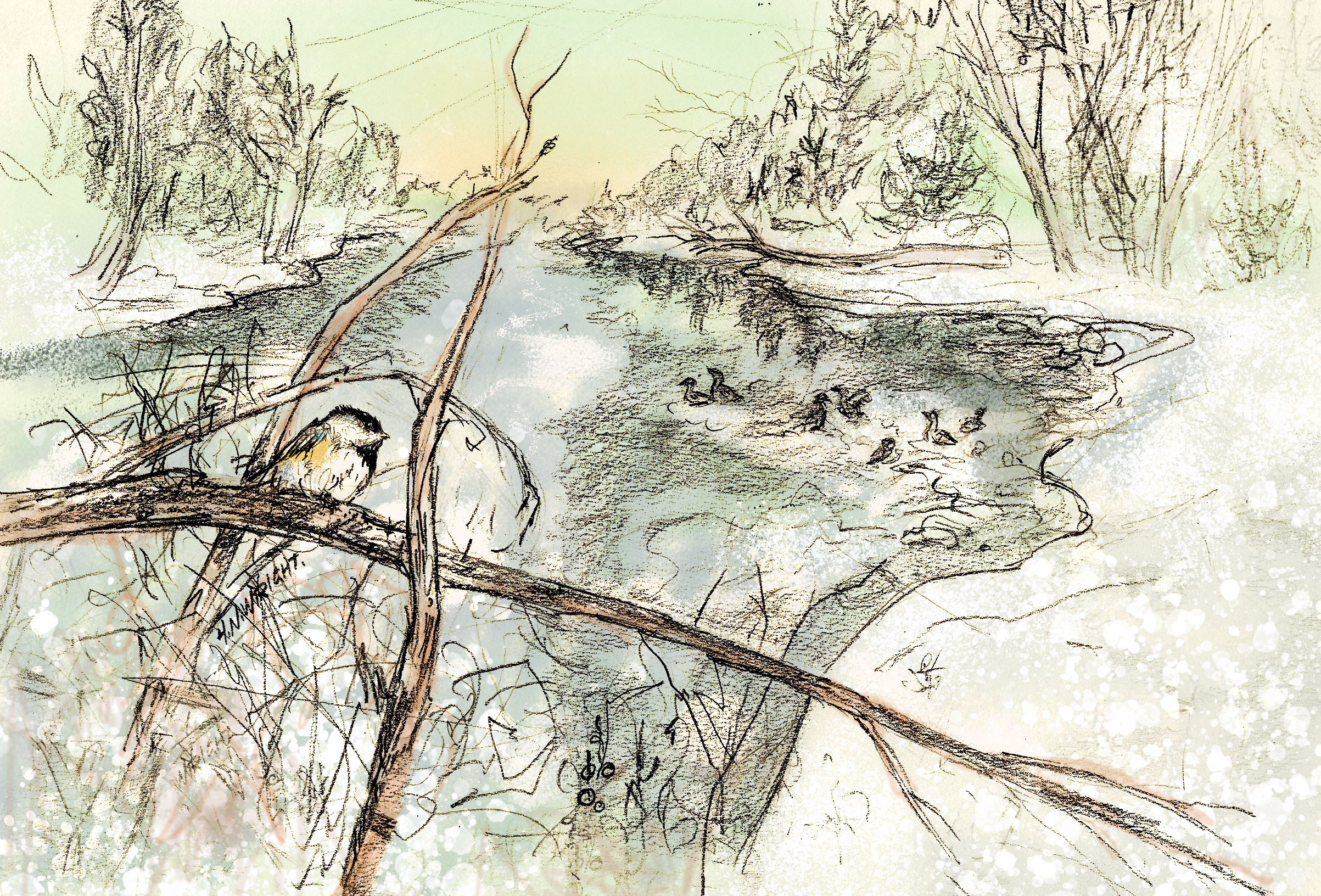Wintertime in Michigan can present certain challenges, but it also brings a powerful beauty to the landscape of the Sleeping Bear Dunes National Lakeshore; rolling ice features transform each stretch of shoreline into frontiers of alien planets; glistening snow lays heavy on boughs of white pines, needles vibrantly green against a pale and bright sky. Crisp, cold, arresting.
By Holly N. Wright | National Park Enthusiast
As February approaches its conclusion, the earliest signs of winter’s transition to spring are subtly revealed. The days are lengthening. And now, out of the stillness, comes the bright calls of active birds.
Winter creates some delightful conditions for birdwatching. Bare branches yield clear views; snow reveals tracks. Dan Kerby, naturalist and consultant for Wild Birds Unlimited (https://traversecity.wbu.com), Traverse City, describes his experience of winter birding in northern Michigan: “It’s just…peaceful. Quiet. Relaxing.” Kerby looks forward to sighting present-only-in-winter species like pine grosbeaks and rough-legged hawks. A wonderful assortment of both migratory and year-round species (including raptors, waterfowl, finches and woodpeckers and more) currently occupies the fields and forests of coastal northern Michigan. Bald eagles, snowy owls, white-winged crossbills and fierce-looking pileated woodpeckers alike seek sustenance from the frozen land. The experience of sighting and watching these beautiful and varied creatures during winter bolsters the soul. 
Experts, hobbyists, and beginner birdwatchers are all represented at the Sleeping Bear Dunes National Lakeshore. Birdwatching is an activity that can be nearly free of monetary cost and doesn’t require prerequisite knowledge (though once one starts birding, they may find that they have become captivated and go on to explore further their curiosity, perhaps even developing confidence with identification). Learning about birds can enrich any hike; sighting even common species becomes precious. Everyone can learn to look for and recognize birds.
BOOKS
Dan Kerby is a bird enthusiast, and he knows that many likeminded bird aficionados are in the area; so Wild Birds Unlimited has stayed open despite recent winter storms, available to equip customers with binoculars or field guides like:
- “Birds of Michigan” (by Ted Black, Gregory Kennedy; a Lone Pine publication), a fantastically illustrated guide which provides suggestions for specific sites to spot each species.
- Stan Tekiela’s “Birds of Michigan”, a photographed guide, which can also be purchased with a cd of bird calls for learning to recognize calls.
Both books are reader-friendly and accessible. Lightweight and waterproof laminated pamphlets of bird species are also available at Wild Birds Unlimited. Some laminated pamphlets, and Stan Tekiela’s “Birds of Michigan”, as well as a Stan Tekiela guide for children, are available at the Cottage Book Shop in Glen Arbor. According to the National Park's website, “Bird lists and checklists are available at the Visitor Center and a number of field guides are also available for purchase.”
APPS
Ed Mohle, Grand Traverse Audubon Club member, suggests the use of apps to enrich birdwatching. Consider downloading apps and getting familiar with their features before setting out.
- “Merlin Bird ID” by Cornell Lab of Ornithology is a free app that takes the user through a series of questions to support identification. This app does require storage space on devices. Cornell Lab of Ornithology is a trusted source for information on birds.
- The “eBird” app, also free, has different but useful features; its GPS feature can direct you to specific sites where certain birds have been spotted; the app can help users understand what birds are present in their area. Be advised, this app will probably take some practice, but birders appreciate this app for its ability to record and share data; the collective data from users can support conservation of birds.
“Of course, birds are beautiful,” reflects Ed, as Carolyn, his wife, kneels at the window, photographing birds visiting their feeders, camera shutter clicking. “Being able to recognize and identify them, knowing that habitat loss is a fact, is a way to protect them.” Citizen scientists who monitor birds and record data are important protectors of birds. 
Perhaps one of the greatest draws of the Sleeping Bear Dunes National Lakeshore is the diverse variety of habitat; dunes, forests, meadows and wetlands; the wide range of plants and habitat supports the presence of biodiverse birds (to learn more, visit the National Park Service website; “Learn About the Park” à “Nature”). According to NPS, “So far 240 species of birds have been identified within the lakeshore.”
Are there particular parks you are planning to visit? Are there certain species of birds that you would hope to see? Consider what kinds of birds you might see in particular habitats.
Listen for bird calls and woodpecker drumming; are there holes in the trees, seed casings or excreted pellets on the ground? Are there waterfowl tracks on the surface of the frozen stream?
Consider, what are the bird’s habits? What do they eat? How do they acquire their food? When do they mate and raise young? When do they hunt? Where might they hide? How do they move? Keeping these questions in mind may help us to begin to notice birds; growing an understanding of birds can develop into a deeply enjoyed activity both peaceful and exciting.
 I hope that, if you are at the Sleeping Bear Dunes National Lakeshore this winter, you experience the whistling sound of a flying common goldeneye as it lifts itself from the water, wings beating to support its weight; or that you be delighted by the cheerful call calls of chickadees hopping lightly from branch to branch when a bit of blue sky peaks through the clouds. I hope you spot a rafter of wild turkeys with blunt, iridescent feathers puffed up against the cold, or witness a rough-legged hawk hovering in the wind, searching for prey.
I hope that, if you are at the Sleeping Bear Dunes National Lakeshore this winter, you experience the whistling sound of a flying common goldeneye as it lifts itself from the water, wings beating to support its weight; or that you be delighted by the cheerful call calls of chickadees hopping lightly from branch to branch when a bit of blue sky peaks through the clouds. I hope you spot a rafter of wild turkeys with blunt, iridescent feathers puffed up against the cold, or witness a rough-legged hawk hovering in the wind, searching for prey.
To those preparing for time outside, Dan Kerby recommends, “Bring extra clothing. Always have water—no matter the season. In all seasons, expect the unexpected, but especially in winter.” Happy birding!
